Ask any lifter at your local gym and they will tell you if bigger legs are on the agenda, then you must squat. No excuses. But what if you have achy knees, a chronically sore back, or just can’t seem to get the form down to squat effectively?
Let’s look at why you’re having trouble squatting and shed light on some alternatives. Not being able to squat isn’t a death sentence condemning you to a life with skinny legs. You’ll just need to put on your thinking cap, come up with some new ideas, and put them into action with a solid, effective plan.
Bad Knees, Hurt Back and Bruised Ego
Many who avoid the squat complain and suffer from hurt or sore knees. Stabbing, shooting, or aching pain from some injury, overuse, or from years of squatting incorrectly. This pain, whatever the cause, prevents these individuals from squatting correctly and, subsequently, takes them further away from the incredible benefits.
Others may have similar issues with their lumbar (lower back) area. Chronic soreness, weakness or a compressed or herniated disc in the spine are all too common. Causes could include injury, sedentary job habits, incorrect form or abuse of other exercises such as for back, or a genetic predisposition to incur back issues.
Finally, others will simply have a test of their egos. They avoid squats because it could be embarrassing or bruise their egos to the point that they avoid it altogether. Their belief is that it’s much easier and safer to jump into the leg press, leg extension, or even hack squat machines and bang out a few partial reps than to get under the bar and squat with a full range of motion.
Level Up Your Fitness: Join our 💪 strong community in Fitness Volt Newsletter. Get daily inspiration, expert-backed workouts, nutrition tips, the latest in strength sports, and the support you need to reach your goals. Subscribe for free!
Whatever your reasoning, the fact remains that you’re looking for alternatives to the traditional barbell back squat and desire to still build an impressive, muscular set of legs.
Can You Get Bigger Legs Without Squats?
You may have read many articles touting the benefits of alternative exercises for squats. Some of the more common include Bulgarian split squats, step-ups, several forms of lunges, and front squats. And yes, to answer the question, you can get bigger legs without the traditional squat, but here I want to detail out some of the nuances of said alternatives and make them more effective and efficient so they’ll have more impact and be worth your time and effort.
It will take, however, a more focused dedication on your part for this to work. As with any muscle-building program a strict adherence to form, rest periods, purposeful execution, and consistency is of paramount importance for it to be effective.
Alternatives for Bigger Legs
Let’s look at a few alternatives to the traditional barbell back squat. Additionally, we’ll list some ways to make them more effective so that you’re not wasting any time and will build more muscle.
1. Bulgarian Split Squat
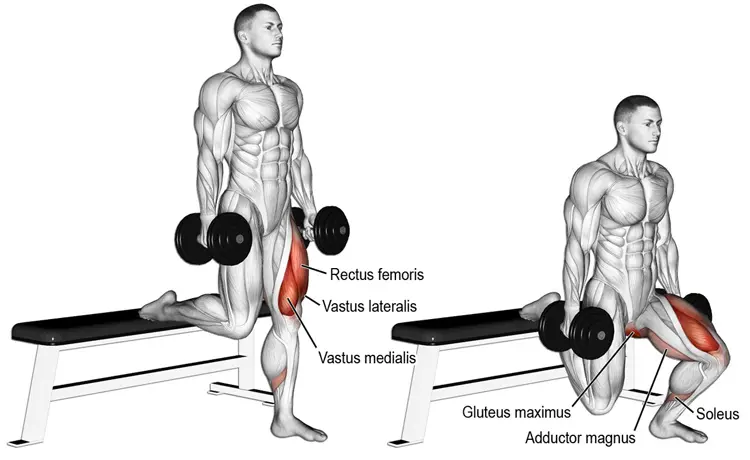
Grasp a pair of dumbbells of moderate weight and face away from a bench. Place one foot behind you on the bench and the other foot in front of you just beyond your hips. Lower your body down to the floor slowly and under control keeping your knee in line with your foot.
Pause for a count just before your knee touches the floor and press back up to the standing position avoiding locking your knee.
Make it Harder:
When descending and pressing with your front foot, be sure to shift your hips back slightly and press through your heels. This will keep your body more upright, and place more of the stress on your thighs and away from your knees. Also, practice slowing down the cadence. Try a two-second down and two-second up count.
Related: Guide to Bulgarian split squats.
2. Walking Lunge
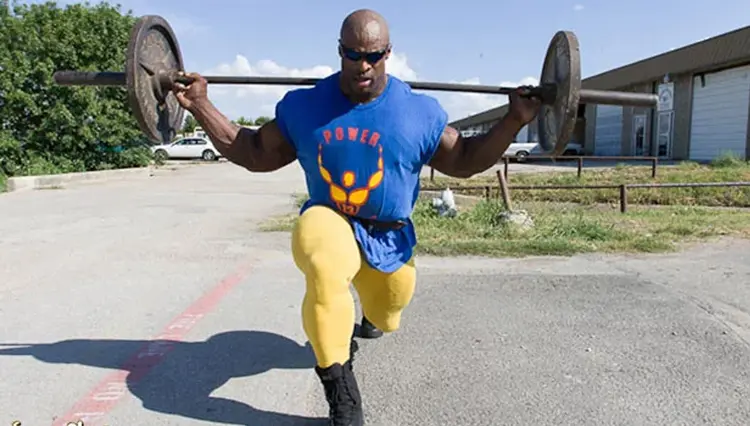
Place a barbell on the top of your traps and begin lunging by taking a large step forward. Once your front foot is placed, slowly descend until your trailing knee is an inch or two from the floor. Be sure to focus the stress on your heel and avoid placing pressure on your toes. Once you are in the bottom position, launch yourself in a rapid motion up and place the trailing leg beside your front foot. Repeat with the other leg.
Make it Harder:
Instead of coming to a standing position after each rep, continue to bring the trailing foot forward into another lunge position. This will cause more continuous tension for each leg inducing more fatigue.
Related: Ultimate guide to Lunges
Level Up Your Fitness: Join our 💪 strong community in Fitness Volt Newsletter. Get daily inspiration, expert-backed workouts, nutrition tips, the latest in strength sports, and the support you need to reach your goals. Subscribe for free!
3. Single Leg Press
The single leg press isn’t considered a true free-weight alternative to squats, but it can have positive effects on building more leg mass. If the traditional double-legged leg press yields little gains, try the single-leg version. It will isolate and place more overload on each leg individually.
Sit in a 45 degree leg sled machine. Place one foot on the footplate and make sure it is in line with your knee and hip. You’ll want to avoid placing your foot in the center of the plate as this will strain your knees to cave in.
Lower the weight slowly until your knee forms a 90-degree angle and just before your hip rises up off of the seat. Press up through your heel to take tension off of your knee and straighten your leg just before lockout.
Make it Harder:
Try one-and-a-half reps. Lower the weight halfway down, press back up, lower again for a full range of motion, and then finally press back up. That is one rep. You can also reverse the half rep scheme by lowering the weight all the way down, pressing halfway up, lowering again, and then pressing all the way back up for one rep. This will not only create more time under tension, but also a severe burn in the muscle.
Related: Leg Press Exercise Guide
4. Front Squat
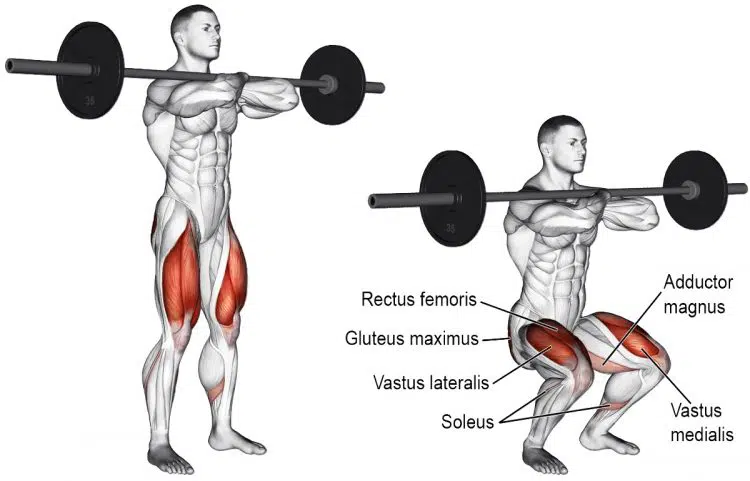
For some, the front squat could possibly cause similar issues as the back squat, but for others it may present a welcomed alternative. As challenging as it is, the front squat is an incredible exercise that shifts the stress away from the hips and more toward the quadriceps.
Place a barbell in the front rack position: placed on your anterior (front) deltoids with either a cross-armed position with your elbows pointing out front or arms straight and hands curled under the bar.
With a straight back, braced abs, and head facing straight forward descend into the squat position as you move your hips back. Visualize sitting down on a small stool behind you. Press back up before locking your knees.
Make it Harder:
Try pause reps. When you descend into the bottom position, pause for a count of two or three before pressing back up to the standing position. This will not only provide more time under tension but also serve as great practice for executing form and function.
Sample Program
Let’s take a look at a leg program that includes all of these exercises for more leg mass without barbell back squats.
Perform the following program once per week with program A on one day and program B at least three days later. Stick to two-minutes rest between sets.
Program A
- Bulgarian split squat 3 x 12 each leg
- Leg extension 2 x 15-20
- Single leg press 2 x 12 each leg
- Leg curl 3 x 12
- Romanian deadlift 2 x 12
Program B
- Front squat 3 x 12
- Walking lunge 3 rounds
- Leg extension 2 x 15-20
- Romanian deadlift 3 x 12
- Leg curl 2 x 12
Revisiting The Squat
The squat is worth revisiting despite your trepidation. One careful, effective way is to start extremely slowly and build up in very small increments. This will ensure your joints have plenty of time to adapt and you’ll make significant inroads into proper form.
After your normal leg training is finished or on other non leg training days perform two or three sets of bodyweight squats. Go with 10 to 15 reps and focus on form. Drop down as if sitting in a chair, bring your hips back, and keep your knees in line with your feet. Shift your weight to the heels of your feet and drive up under control.
After a few weeks of just your bodyweight, and only after you are 100% comfortable with your form, graduate up to an empty bar. Take a few more weeks to perfect your form once again. Increase the load by only 30 to 50 pounds every two or three weeks.
The slow and steady increases in load is intentional. It’s to ensure perfect form and will give you plenty of time to practice and feel completely comfortable performing squats. It will also build resiliency in your knees, back, and hips.
In closing
Not being able to squat for whatever reason isn’t a death sentence. There are plenty of alternatives just as, if not more effective than the traditional barbell back squat. All it will take is adherence to form, strict consistency, and applied intensity.






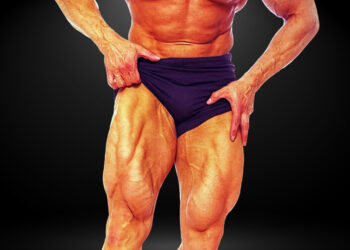
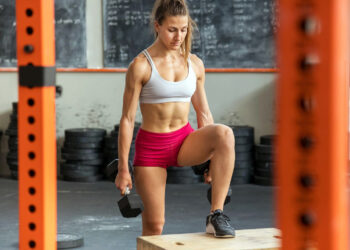
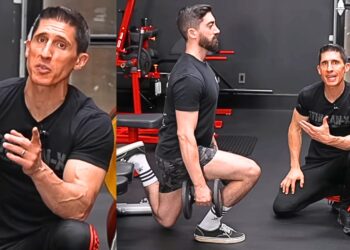

3 rounds for walking lunges. What is a round? Why do all fitness articles leave out important details. So annoying.